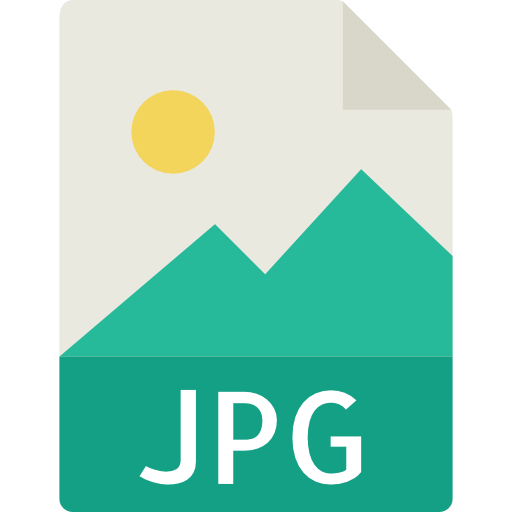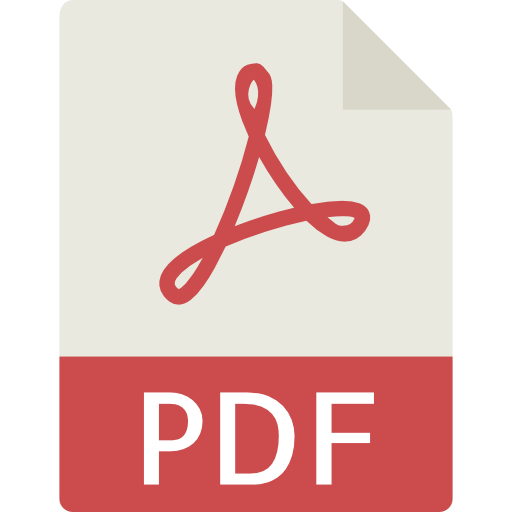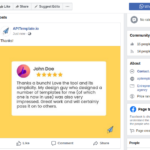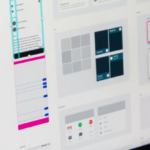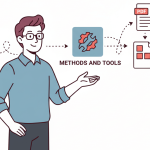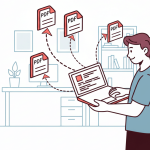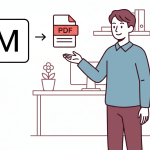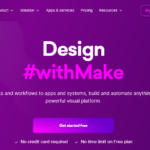Creating PDFs is still a common requirement for many applications. Developers often need to prepare invoices, reports, or certificates, but building a custom system for this takes time and adds complexity.
Manual approaches also slow down workflows and make scaling difficult.
PDF generation APIs solve this problem. These APIs let you generate documents automatically, integrate them into your workflows, and ensure that every file follows the right formatting and compliance rules.
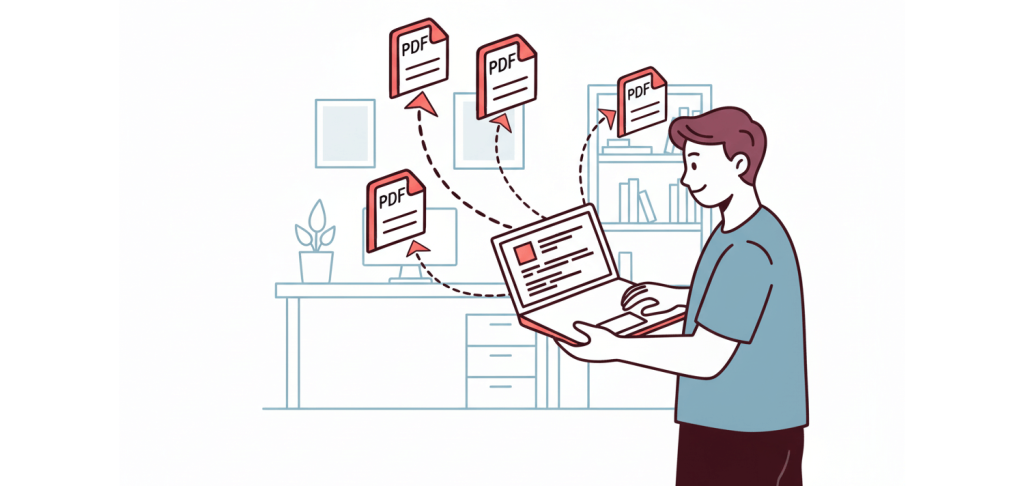
In this article, we review 5 leading PDF generation APIs and highlight the key factors to consider when choosing one, such as templates, styling, performance, and compliance, to help developers and businesses automate PDF document creation effectively.
1. What is a PDF Generator API?
A PDF generator API is a tool that helps your applications create PDF files automatically. You send data such as HTML, JSON, or content from a template to the API, and it gives you back a ready-to-use PDF document.
This saves you from building a PDF engine from scratch.
You can use a PDF generator API in many different cases. For example, you might need invoices, reports, or certificates created in bulk. You may also want to generate contracts or marketing assets on demand. In each case, the API lets you turn your data into a professional PDF quickly.
The main idea is that your system connects with the API, sends information, and receives a PDF in return. This makes document creation part of your workflow, so you do not have to prepare files manually.
2. Benefits of Using a PDF Generator API
A PDF generator API automates document creation for you. Instead of creating files one by one, you can generate thousands of PDFs automatically. This is useful when your business needs large numbers of invoices, receipts, or reports every day.
It also gives you template flexibility. You can design templates once using HTML or a visual editor, then reuse them whenever you need new documents. With support for JSON data, you can fill in variables such as customer names, order details, or certificate fields.
You also get full control of the design. APIs support CSS, fonts, headers, and footers. This allows you to match your branding and keep your layout consistent across all documents.
Another benefit is data integration. You can connect the API to your CRM, database, or other systems. The structured data flows into the templates, so the PDFs are created with the right content automatically.
Scalable performance is another strength. You can send requests in real time for a single PDF or use asynchronous processing to handle bulk jobs. This ensures the system works smoothly whether you need one document or thousands.
Finally, security and compliance are part of the package. Many APIs support GDPR and HIPAA requirements. With regional hosting, your data stays within the right location, which helps you meet privacy standards.
3. Top 5 Best PDF Generation APIs
Choosing the right PDF generation API can save you time and help you keep your workflows consistent.
Each of the following options offers different strengths for creating documents, from templates to data integration. In this section, you will see a short overview of the five most reliable APIs available today.
1. APITemplate.io

APITemplate.io offers a reliable PDF Generation API designed for both developers and non-technical users. You can create documents from reusable templates using a visual WYSIWYG editor or by working directly with HTML.
This flexibility means you can design PDFs without coding knowledge, or apply your own HTML, CSS, and JavaScript for full control.
The API is built to handle dynamic, data-driven documents. You send JSON or key-value pairs, and the system fills in your template automatically.
This makes it easy to generate invoices, reports, or certificates in bulk while keeping formatting and branding consistent.
Key Features of APITemplate.io PDF Generation API
- WYSIWYG template editor and HTML-to-PDF conversion.
- JSON-based data population for dynamic documents.
- Custom CSS and JavaScript support for styling and layouts.
- Side-by-side editor with real-time preview.
- Header and footer customization with page numbers.
- No-code integrations with Zapier, Make.com, Airtable, Bubble, and n8n.
- REST API and SDK support for Python, Java, PHP, C#, JavaScript, and UiPath.
- Regional API endpoints in the US, EU, Singapore, and Australia for compliance.
- Sync and async PDF generation with webhook notifications.
- Proven scalability with over 10 million PDFs generated.
With APITemplate.io, you can start creating PDFs quickly and integrate them into your workflows with ease. You can even try it for free and generate up to 50 PDFs each month before upgrading as your needs grow.
Pricing
APITemplate.io provides simple and scalable pricing for its PDF Generation API.
- PDF Basic plan starts at $19/month(Paid annually), offering 3,000 PDFs with 20 templates and CDN storage.
- PDF Standard plan at $69/month(Paid annually) supports 12,000 PDFs and 180 templates, including team collaboration.
- For advanced needs, the PDF Enterprise plan at $139/month(Paid annually) delivers 25,000+ PDFs, unlimited templates, priority support, and Bring Your Own Storage.
Every plan includes REST API, Zapier, and no-code integrations to keep workflows smooth. You can start for free and generate up to 50 PDFs monthly with no credit card required.
Enterprise Features
APITemplate.io also offers a set of enterprise-grade features designed for businesses that need scalability, security, and flexibility in their PDF and image generation workflows.
These advanced tools help teams collaborate efficiently, maintain compliance, and ensure performance at scale.
Key enterprise features include:
- Bring Your Own Storage (BYOS): Integrate directly with AWS S3, Cloudflare R2, or Azure Storage to keep full control of your generated PDFs and images.
- Collaboration with Teams: Create and manage teams within your organization, making it easier to collaborate, share templates, and streamline workflows.
- Multiple Regional Endpoints: Choose from U.S., Europe, Singapore, or Australia servers to reduce latency and meet data compliance requirements.
- Pay-As-You-Go Flexibility: Avoid interruptions by scaling usage beyond your plan and paying only for the additional documents generated.
- Two-Factor Authentication (2FA): Enhance account security with authenticator-based two-factor login.
Alongside these, APITemplate.io supports custom CSS/JavaScript, synchronous and asynchronous processing, and advanced PDF generation options like headers, footers, and resampling.
You can explore the full details on their Enterprise Features page. To see how these capabilities can fit your workflows, start exploring our enterprise features today and experience the difference.
HTML to PDF Conversion
APITemplate.io also supports HTML to PDF conversion, giving you a simple yet powerful way to turn raw HTML, CSS, and JavaScript into polished, professional PDF documents.
Whether it’s invoices, reports, or certificates, the process is fast, reliable, and developer-friendly, making it a great fit for businesses of all sizes.
With the HTML to PDF tool, you can:
- Effortlessly convert custom HTML or URLs into pixel-perfect PDFs.
- Use advanced options like custom CSS, JavaScript, headers, and footers.
- Integrate smoothly with automation platforms such as Zapier, Make.com, n8n, Airtable, or via REST API.
- Preview and fine-tune your templates with a real-time editor before finalizing your output.
You can try it out right away using the free HTML to PDF online tool and experience how easy it is to generate dynamic, branded PDFs. Start exploring our HTML to PDF features today and see how they can simplify your document workflows.
2. CraftMyPDF

CraftMyPDF helps you design and generate PDF documents quickly. You can use its drag-and-drop template editor in your browser to build templates without coding.
The platform connects with no-code tools like Zapier, Make, Bubble.io, or N8n, and you can also use its REST API for direct integration.
Key Features
- Drag-and-drop template editor with text, images, charts, QR codes, and barcodes.
- Import existing PDFs as templates and add new elements on top.
- Create fillable forms with checkboxes, dropdowns, and signature fields.
- Generate PDFs within your region using US, EU, Singapore, or Australia endpoints.
- Embed the PDF editor in your own app so users can design templates themselves.
- Integrate easily with Zapier, Make.com, Bubble.io, Coda.io, FlutterFlow, and REST API.
Pricing
You can start with the free plan, which includes 50 PDFs or images and 3 templates each month.
Paid plans begin at $29/month (Lite) for 1,200 PDFs or images and go up to $799/month (Enterprise), which supports 300,000 PDFs or images and 50,000 templates.
All plans include API access and integrations, while higher tiers add team collaboration, AWS S3 storage, and priority support. Explore full pricing plans on the CraftMyPDF Pricing Page.
Enterprise Features
CraftMyPDF offers extra options for larger teams and businesses. You can store files directly in your own AWS S3 or Cloudflare R2 account.
Teams can collaborate on shared templates, and template versioning lets you track and roll back changes.
Regional endpoints keep your data close to where you work, and two-factor authentication adds another layer of account security. Learn more about enterprise features on the CraftMyPDF Enterprise Page.
CraftMyPDF gives you control over template design and workflow automation. You can sign up for free today and start creating your first PDFs with no credit card required.
3. PDF.co

PDF.co provides a REST API that automates PDF conversion, editing, data extraction, and management. It is designed for developers and businesses that need to handle document-heavy workflows without building tools from scratch.
You can generate new documents, modify existing ones, and automate tasks such as splitting, merging, or watermarking files. The platform also supports AI-powered invoice parsing, making it simple to turn invoices into structured JSON data without predefined templates.
Developers often choose PDF.co for its wide range of use cases, from extracting data from reports to converting PDFs into different formats like Excel, CSV, or JSON.
It also integrates with over 3,000 apps through Zapier and Make, enabling automation without heavy coding. Security is another focus, as the service provides encrypted processing, link expiry controls, and compliance-ready workflows for sensitive data.
Key Features of PDF.co
- Generate and edit PDFs from raw data or templates
- Extract text, tables, and images from documents
- AI-powered invoice parsing with no templates required
- Merge, split, and annotate PDF files
- Convert PDFs to formats such as Excel, CSV, XML, and JSON
- REST API with 3,000+ integrations via Zapier and Make
- Secure data processing with HTTPS and advanced security options
Pricing
- Basic: $8.99/month (16,500 credits, 60 mins link expiry)
- Personal: $22.49/month (37,000 credits, 60 mins link expiry)
- Business 1: $44.99/month (80,500 credits, 60 mins link expiry)
- Business 2: $89.99/month (159,850 credits, 1,440 mins link expiry)
- Business 3: $270.00/month (483,000 credits, 1,440 mins link expiry)
- Enterprise: Custom pricing for more than 500,000 credits, with advanced features and priority support
4. DocRaptor

DocRaptor is an HTML-to-PDF API that uses the Prince PDF engine for high-quality conversion.
It supports HTML, CSS, and JavaScript to generate complex layouts and accurate formatting. The service is SOC2, HIPAA, and GDPR compliant, so it is suitable for industries with strict data standards. It also provides 99.99% uptime, making it reliable for business workflows.
Key Features of DocRaptor
- Advanced conversion: Create PDFs with complex layouts, custom headers, footers, floats, and bookmarks.
- Accessible PDFs: Generate documents that meet WCAG 2.0, Section 508, and ISO-14289 standards.
- Forms support: Convert HTML forms into interactive PDF forms, including accessible versions.
- Flexible styling: Use CSS for page sizes, typography, and responsive design.
- Scalable infrastructure: Handle small or large document generation with no input or output size limits.
- Free testing: All accounts include unlimited watermarked test documents.
- Developer support: Example code and libraries are available in Python, Java, Ruby, PHP, .NET, and more.
- Secure hosting: Host PDFs at unbranded URLs for integration with tools like Zapier and Salesforce.
Pricing
- Free: 5 documents per month ($0)
- Basic: 125 documents per month ($15)
- Professional: 325 documents per month ($29)
- Premium: 1,250 documents per month ($75)
- Max: 5,000 documents per month ($149)
- Bronze: 15,000 documents per month ($399)
- Silver: 40,000 documents per month ($1,000)
- Enterprise: Unlimited documents (contact sales)
DocRaptor is built for teams and enterprises that need secure, reliable, and accurate PDF generation at scale.
5. PDF Generator API (by Actual Reports)

PDF Generator API is designed for businesses that need secure and scalable document automation.
It helps you generate invoices, contracts, packing slips, or labels directly from your existing data. The platform is ISO 27001 certified and compliant with HIPAA and GDPR, so you can rely on it for sensitive or regulated documents.
Key Features of PDF Generator API
- WYSIWYG Document Editor: Create templates without code and preview changes instantly.
- Dynamic Web Forms: Collect data online and automatically generate accurate PDFs.
- HTML to PDF API: Convert your HTML content into pixel-perfect documents.
- Fill PDF Form API: Populate PDF forms programmatically with your own data.
- Reusable Templates: Save time by designing once and using the same templates across workflows.
- Barcode and QR Code Support: Embed tracking or scannable codes into your documents.
- Data Security: Built on ISO 27001 practices with full SSL encryption and compliance standards.
- Integration Support: Works with multiple platforms and languages, including Python, Java, PHP, Ruby, Node, Bubble, Make, and Airtable.
Pricing
- Starter costs: $590 per year and includes 2,500 merges/month with 60 requests/minute.
- Basic costs: $990 per year, and includes 10,000 merges/month with 60 requests/minute.
- Premium costs: $3,990 per year and includes 100,000 merges/month with 120 requests per minute.
- Enterprise costs: $6,990 per year and includes 500,000 merges/month with 240 requests/minute.
4. How to Choose the Right PDF Generation API
PDFs are one of the most widely used document formats in business, education, and software applications. Whether you need to create invoices, contracts, certificates, shipping labels, or reports, chances are you’ll rely on a PDF generation API to do the heavy lifting.

With so many PDF APIs available and ranging from simple HTML-to-PDF services to full template-driven platforms, choosing the right one for your project can feel overwhelming. The best choice depends on your specific requirements, including template support, styling flexibility, integration options, security, and performance at scale.
This article will give you a step-by-step framework to evaluate your options. By comparing these six key criteria, you’ll be able to select the API that truly fits your needs.
i. Template Support for PDF Generation
The foundation of most PDF workflows is the template. Instead of coding layouts from scratch, templates allow you to design documents once and reuse them endlessly.
What to look for:
- Drag-and-drop template builders: Great for non-developers who want to design documents visually.
- Dynamic placeholders: Support for variables like
{{customer_name}}or{{invoice_total}}. - Conditional logic: The ability to hide or show elements depending on data.
- Versioning and cloning: Quickly duplicate templates for A/B testing or new use cases.
Example: An HR team might use a template to generate employment contracts automatically. With a template-driven PDF API, the HR manager simply uploads employee data and the system produces standardized contracts and no manual editing required.
👉 With APITemplate.io, you can design templates using a drag-and-drop editor or full HTML/CSS for precision control. Templates support dynamic fields, conditional sections, and reusable components, making it easy to scale your document workflows.
ii. Styling and Layout Control
PDF documents often represent your brand and think invoices, marketing brochures, or compliance reports. That’s why styling and layout flexibility are essential.
What to consider:
- HTML & CSS support: If your team is already comfortable designing in HTML, choose an API that can convert HTML/CSS directly into PDFs.
- Advanced layouts: Check if the API supports tables, multi-column grids, headers, footers, and pagination.
- Font embedding: Important if you use custom corporate fonts.
- Media support: Does it handle images, charts, or even barcodes and QR codes?
Example: A real estate agency may need high-quality PDF brochures with images, grids, and branded typography. APIs that support HTML-to-PDF conversion and advanced CSS styling will give them far better results than basic text-based APIs.
👉 APITemplate.io supports full HTML/CSS styling, so you can create pixel-perfect documents that reflect your brand. It also supports images, QR codes, barcodes, and charts and ideal for invoices, shipping labels, and reports.
iii. Data Binding Options: Automate With Your Data
PDFs rarely exist in isolation and they are usually generated from data sources like CRMs, spreadsheets, or forms. That’s why data binding is a key feature.
Common approaches:
- JSON binding: Developers can send structured data via API requests.
- CSV uploads: Ideal for bulk generation (e.g., certificates for 500 event attendees).
- Direct integrations: Some APIs connect with Google Sheets, Airtable, or databases.
Example: An e-commerce company can bind order data (customer name, order details, shipping address) to a PDF invoice template. With automation in place, each new order instantly generates a customized invoice PDF.
👉 APITemplate.io supports JSON data binding via REST API and bulk generation from CSV files. This makes it perfect for both real-time automation (like invoices) and large-scale batch jobs (like certificates or labels).
iv. Performance at Scale
If you’re only generating a few PDFs a month, performance might not seem critical. But for SaaS platforms, e-commerce businesses, or enterprises, scale is everything.
Key performance factors:
- Speed: Look at the average time it takes to generate a single PDF.
- Batch processing: Can the API process hundreds of PDFs in one request?
- Regional endpoints: Some APIs offer servers in the US, EU, or Asia for faster delivery and compliance.
- Uptime guarantees: Check for SLAs if you’re building mission-critical applications.
Example: A payroll platform that generates thousands of payslips on the same day each month must ensure its PDF API won’t buckle under heavy load. APIs with strong concurrency support and auto-scaling infrastructure are essential.
👉 APITemplate.io offers regional endpoints in the US, EU, AU, and Singapore, ensuring fast response times and compliance with local regulations. Its infrastructure scales to handle thousands of PDF generations reliably.
v. Compliance & Security: Protect Sensitive Data
Many documents like contracts, invoices, or HR files—contain sensitive data. Choosing a PDF generation API that prioritizes compliance and security protects your business from legal risks.
What to check:
- GDPR/DSGVO compliance if you operate in Europe.
- HIPAA compliance for healthcare-related documents.
- Data encryption in transit (HTTPS) and at rest.
- Regional hosting options to meet data residency requirements.
- Authentication methods (API keys, OAuth, IP whitelisting).
Example: A fintech startup generating loan agreements must ensure its API provider complies with financial regulations and offers secure endpoints.
👉 APITemplate.io supports data residency through regional endpoints. It uses secure HTTPS connections, token-based authentication, and enterprise-grade reliability for sensitive data.
vi. Integration Flexibility
The best PDF generation API should fit seamlessly into your existing workflows, whether you’re a developer or a non-technical business user.
Integration options to look for:
- REST API: Universal compatibility with modern apps.
- SDKs and client libraries: For Python, Node.js, Java, PHP, etc.
- No-code connectors: Zapier, Make.com, Bubble, n8n.
- Webhooks: For triggering downstream workflows.
Example: A marketing team can use Zapier to connect a form submission tool to the PDF API, automatically generating a certificate for each new registrant and without writing any code.
👉 APITemplate.io integrates with Zapier, Make.com, n8n, Bubble, and OutSystems, in addition to its REST API. This makes it equally valuable for developers and non-technical teams looking for no-code automation.
Final Thoughts: Making the Right Choice
Choosing the right PDF generation API is about more than just converting HTML into PDFs. It’s about finding a solution that:
- Supports templates to save time.
- Gives you full styling and layout control.
- Offers flexible data binding options.
- Scales in performance and reliability.
- Meets your compliance and security requirements.
- Integrates smoothly with your existing tools and workflows.
By evaluating providers based on these six criteria, you’ll be able to confidently pick the best solution for your needs, whether you’re a startup automating invoices or an enterprise scaling document workflows across global teams.
👉 APITemplate.io combines all these features such as template-driven design, powerful HTML-to-PDF rendering, JSON and CSV data binding, global performance, enterprise compliance, and integrations with no-code tools.
Start your free trial with APITemplate.io today and see how much time and effort you can save by automating your document generation.
5. PDF Generation API of APITemplate.io
APITemplate.io is a platform that helps you automate PDF and image creation from reusable templates. You can design documents with its WYSIWYG or HTML editor and connect the service to tools like Zapier, Make.com, Airtable, or n8n. With millions of PDFs already generated, it has proven reliability for business workflows.
Its PDF Generation API makes it easy to create data-driven invoices, reports, or certificates while keeping layouts consistent. You also benefit from regional endpoints, sync and async processing, and real-time previews.
You can start for Free to generate up to 50 PDFs each month and scale as your needs grow.
6. FAQ
1. What is a PDF generator API, and how does it work?
A PDF generator API is a service that lets applications create PDF documents programmatically. You send data (like JSON or HTML) to the API, and it returns a formatted PDF file.
2. What are the benefits of using a PDF generation API vs building your own tool?
Using an API saves development time, ensures reliable PDF rendering, and provides features like templates, CSS styling, headers/footers, and compliance out of the box. Building your own tool requires more resources and ongoing maintenance.
3. How do PDF generation APIs handle templates and data merging?
Most APIs let you design templates using HTML or a visual editor. Then, you pass structured data (such as JSON) to fill placeholders in the template, generating customized PDFs for each request.
4. What security and compliance features should I look for in a PDF generation API?
Look for GDPR and HIPAA compliance, encrypted data transfer (HTTPS/TLS), regional hosting options, and access controls to ensure documents and sensitive data are protected.
5. Can PDF generation APIs handle bulk or real-time document creation?
Yes. Many APIs support synchronous requests for real-time PDFs and asynchronous requests for bulk processing. Some also allow parallel generation to handle high-volume workloads efficiently.
7. Conclusion
You want a dependable way to turn your data into consistent PDFs without slowing your team. PDF generation APIs help you automate document creation, control layout, and connect with the tools you already use.
So, focus on template options, styling control, data binding, performance, and compliance. Choose the API that fits your workflow and volume. Then test it with real templates and real data.
If you are ready to streamline your document workflows, sign up today and start using a PDF generation API for free.
